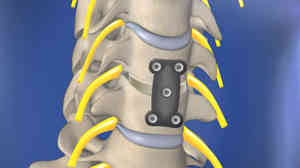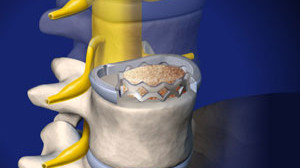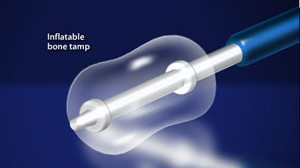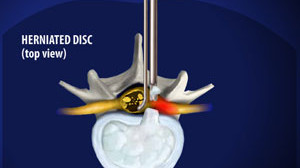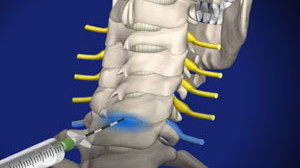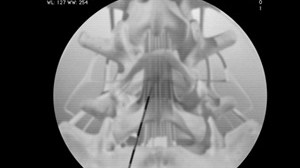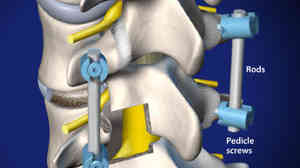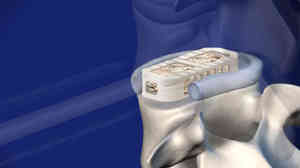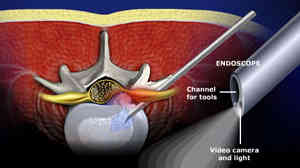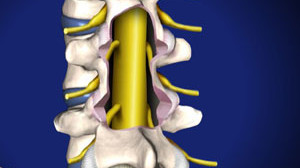-
Anterior Cervical Discectomy and Fusion
This surgery removes a herniated or diseased disc and relieves neck and radiating arm pain caused by parts of the disc pressing on nerve roots.
-
Anterior Lumbar Interbody Fusion (ALIF)
ALIF is generally used to treat back or leg pain caused by degenerative disc disease. The surgeon will stabilize the spine by fusing vertebrae together with bone graft material.
-
Kyphoplasty
This minimally-invasive procedure treats spine fractures caused by osteoporosis. It is designed to provide rapid back pain relief and help straighten the spine.
-
Lumbar Disc Microsurgery
This minimally-invasive technique is used to remove the herniated portion of a vertebral disc. It is 95% to 98% effective in eliminating leg pain (sciatica) caused by nerve root compression. The procedure is performed through a small incision on the back.
-
Cervical Epidural Steroid Injection
This injection relieves pain in the neck, shoulders, and arms caused by a pinched nerve (or nerves) in the cervical spine. Conditions such as herniated discs, spinal stenosis, or radiculopathy can compress nerves, causing inflammation and pain. The medication injected helps decrease the swelling of nerves.
-
Lumbar Epidural Steroid Injection
This injection procedure is performed to relieve low back and radiating leg pain. Steroid medication can reduce the swelling and inflammation caused by spinal conditions.
-
Spinal Fusion (Lumbar Spine)
TLIF is generally used to treat back or leg pain caused by degenerative disc disease. The surgeon will stabilize the spine by fusing vertebrae together with bone graft material.
-
Lateral Lumbar Interbody Fusion (XLIF)
Unlike traditional back surgery, XLIF® is performed through the patient's side. By entering this way, major muscles of the back are avoided. This minimally-invasive procedure is generally used to treat leg or back pain caused by degenerative disc disease. It can be performed on an outpatient basis.
-
Transforaminal Lumbar Interbody Fusion (TLIF)
During this procedure, the surgeon permanently joins two or more vertebrae in the spine. The vertebrae will grow together to form a single, solid bone. Spinal fusion is commonly performed in the neck and lower back, and may be used to correct a wide range of problems in the spine. This animation shows a fusion in the lumbar spine to correct a condition called spondylolisthesis, in which weakened joints or fractured bones have allowed a vertebra to slip forward and pinch a nerve root.
-
Lumbar Herniated Disc
This minimally-invasive procedure is designed to relieve pain caused by herniated discs pressing on nerve roots. This surgery is performed through a small tubular device under local or epidural anesthesia, allowing the patient to leave the hospital the same day.
-
Laminectomy Back Surgery for Spinal Stenosis
This procedure is performed through an incision on the lower back. The surgeon removes a section of bone, called the lamina, from one or more vertebrae. This relieves pressure on the nerve roots caused by stenosis (a narrowing of the spinal canal).

